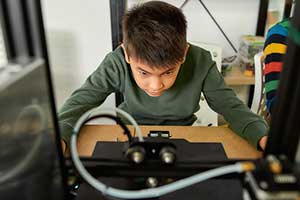
As 3D printers become more common in schools, educators and parents wonder if these machines could affect classroom air quality. In addition, studies have shown that these machines release tiny particles that could harm students’ health. So, should schools allow the use of this new technology? As long as the school board and administration take precautions.
Why Are 3D Printers So Popular In Schools?
3D printers offer a fun and easy way to create three-dimensional objects. Today, many schools use these devices to help students learn about science, technology, engineering, and math (STEM). For example, students can use them to create models of molecules or atoms, which can help them visualize complex concepts.
Additionally, 3D-printed objects can be utilized as teaching tools in other subjects, such as history or art. As technology evolves, even more schools will likely use these devices to enhance their curriculums.
3D Printers Emit Harmful Substances
Despite their many benefits, these machines come with a significant drawback. Studies have found that particles emitted from these devices can exceed safety limits set by the U.S. Environmental Protection Agency (EPA). In particular, volatile organic compounds, also known as VOCs, can cause respiratory problems, headaches, and dizziness and worsen allergies and asthma. VOCs have even been linked to cancer, further threatening the health of children and young adults.
Ultrafine VOCS Are Especially Dangerous
According to the EPA, “The particles released into the air (by 3D printers) are of ultrafine size (1–100 nm), and researchers have found that they are small enough to be deposited deeper into the respiratory system and can be more difficult to clear from the body.” Because of this, extra care is needed when introducing this technology into schools.
Keeping Kids Safe Around 3D Printers
These devices offer a fun and easy way to create three-dimensional objects. However, because they do emit ultrafine VOCS, extra precautions are needed to ensure school safety. Here are some steps educators can take to protect kids around VOC-emitting technologies.
- Keep printing devices in well-ventilated areas.
- Use devices with filters or in enclosed chambers.
- Keep areas clean and free of clutter.
- Avoid using the machine near food or drink.
- Follow the manufacturer’s instructions for operating the machine safely.
- Limit time spent near the device while it is in operation.
- Get professional indoor air quality testing done regularly.
Classroom Air Quality Testing Made Easy with M3 Environmental
If you’re an educator or administrator in the Monterey, CA area concerned about how your 3D printers affect the air quality inside your school, contact M3 Environmental today. Our environmental consulting firm has years of experience helping schools and other organizations improve indoor air quality. Reach out to learn more about classroom air quality and how air testing can keep students and educators safer.





